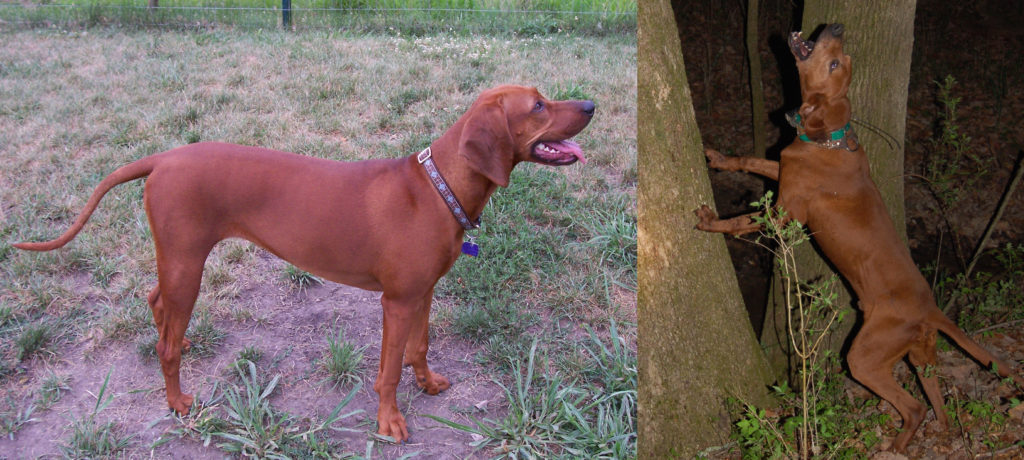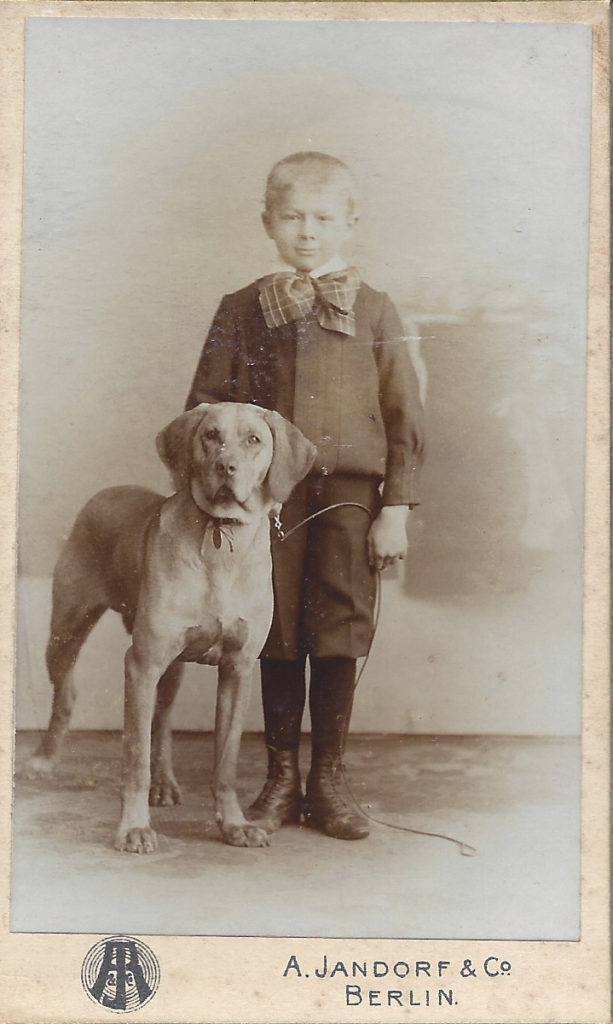Who needs a ridge, anyway?
Not surprisingly, Ridgeback breed culture has always revolved around the ridge.
Ever since the breed’s name was changed from African Lion Dog to Rhodesian Ridgeback, the message was clear: This native breed of southern Africa was special not because it hunted the king of beasts, but rather for the backward-growing stripe of hair up its back.
Early Ridgeback fanciers in America heard the message loud and clear from their African mentors across the pond: Puppies without ridges were not considered typical of the breed, and were often culled, or euthanized, at birth. (It’s important to remember that 50 years ago, attitudes about companion animals – and their expendability – were significantly different from today.) Thankfully, most modern breeders across the globe see ridgeless puppies for what they are – wonderful, loving pets for the families who are lucky enough to own them.
In this age of tremendous genetic advancement and study, we no longer need a ridge to tell us if a dog is a purebred Ridgeback: His DNA can now tell us.
So that begs the question: Do we need a ridge at all?
I think the answer is yes, for two reasons.
First, the ridge helps the Rhodesian Ridgeback distinguish itself from other athletic, short-coated, red dogs. Some Redbone Coonhounds, for instance, do a very credible Ridgeback impersonation.

Two Redbone Coonhounds. Couldn’t they be confused for Ridgebacks at first glance?

Ridgeback or not? Given the time period — late 19th-Century Germany — likely not.
And take a look at the 19th Century cabinet card at left, which was being sold on eBay as a portrait of a Ridgeback. First of all, there is no historical evidence of Ridgebacks existing in Germany in the 1880s and ’90s, when this photograph was taken; the breed was still in its infancy in southern Africa, and looked very little like the modern breed we know today, which really started to emerge in the 1930s and ’40s.
But if I saw this long-ago dog on the street, I might wonder if he was a brown-nosed Ridgeback – albeit a too-houndy one who had some Labrador Retriever overtones. And I’d check his back for a ridge.
The other reason why we shouldn’t consider the ridge obsolete came up at the Rhodesian Ridgeback World Congress in Sweden over the summer. Geneticist Nicolette Salmon-Hillbertz pointed out that ridges have persisted in the indigenous dogs of southern Africa for millennia, without any interference from humans, and nature doesn’t keep traits around unless they provide some benefit to the animal carrying them. So, she posited, the ridge must be beneficial to Africa dogs – otherwise nature would have long ago extinguished it.
Reinforcing that theory was Helle Lauridsen of Lewanika Ridgebacks in Denmark, who shared this story: When she was living in Western Zambia, working with local craftspeople, she came across a group of refugees from the Angolean war living in the deep roadless bush who had a litter of puppies, all ridged in a wide variety of shapes and places. These ridged puppies were accorded special status: They were well fed and were even permitted to play and sleep inside the dwelling with family members. When Helle asked about buying one of the ridged dogs, she was told most emphatically no: These were very special dogs, the owner explained. Money could buy food for some months, but a good dog could feed a family for years.
Helle takes pains to point out that these villagers had never met a white person before she visited, so they knew of no “myths” surrounding the value of ridged dogs that had come from outside their culture. Rather, their attitude about the value of the ridged dogs was a result of their experience with them for as far back as their oral history extended.
Sometimes there’s more to truth than what can be measured with calipers and yardsticks, so I’m for keeping the ridge, and its mysterious, hidden benefits.
What do you think?
The Mysteries of the Ridge, Revealed!
In late June, more than 200 Rhodesian Ridgeback fanciers from across the planet convened in Lund, Sweden, for the 2016 Rhodesian Ridgeback World Congress.
Held every four years, the World Congress is a unique event where the Ridgeback faithful can share views and news, discuss challenges facing the breed, and ignite and rekindle friendships. And last month’s gathering truly raised the bar: Many attendees commented that the line-up of speakers was the among the best of any congress they had attended.
I’d have to agree. Here is just one discussion – I’ll share more in future newsletters – that really set off the lightbulb above my head.
Geneticist Mirko Hornak of the Czech Republic has developed a commercial DNA test that can identify whether a Ridgeback is homozygous or heterozygous for the ridge gene. Other geneticists are offering this service, too, including Jennifer Turner Waldo of the State University of New York at New Palz, who has a DNA test for U.S.-based dogs.
(Quick genetics review: Homozygous dogs, which have two copies of the dominant ridge gene, written in genetic shorthand as RR, can never produce a ridgeless puppy. Heterozygous dogs, which have just one copy of the gene, or Rr, can produce ridgeless if bred to another heterozygote, or a ridgeless. Got it?)
Recently, I’d heard some breeders say that these genetic tests are faulty. Why? Because dogs that were determined to be homozygotes – Ridgebacks that in theory could never produce ridgeless — in fact have produced non-ridged offspring.
Instead, as Mirko and other presenters at the World Congress explained, the ridge mutation, while dominant, has incomplete penetrance. In other words, some dogs may appear to be ridgeless, but are in fact genetically ridged.
In testing Ridgebacks in his lab, Mirko wrote in his abstract for the World Congress, “it was found that sometimes even a dog with one ridge gene (Rr) is ridgeless. This might happen because the ridge gene is very likely silenced,” he posited, adding that no Ridgebacks with two ridge genes (RR) were found to be ridgeless. Mirko estimates that this “silenced” ridge gene occurs in almost 4 percent of puppies produced from homozyogous to heterozygous,or RR x Rr, matings.
This probably explains why persistent oral history in the breed says that ridgeless-to-ridgeless breedings produced ridged offspring. (Even Major Hawley in his landmark book of the breed talks about a Ridgeback being produced from a breeding between ridgeless dogs.) If one of those “ridgeless” dogs was genetically ridged, even though he or she did not have a ridge as we understand the term, then that is indeed possible.
What does this mean for serious students of the breed? We need to understand that it’s not the DNA testing for the ridge gene that’s faulty – it’s our perception of “ridged” that is. While most Ridgeback fanciers understand “ridged” to mean having a very visible stripe of backward-growing hair along the back, genetically “ridged” may mean that just a few hairs are growing against the normal grain of the coat. That follicular disturbance may not be visible to the naked eye, but instead may exist on a molecular level.
(As it happens, I produced one of these “silently ridged” puppies. Click here to see the usual “phantom ridge” that the puppy possessed!)
Curiouser and curiouser! Look for more World Congress views and analysis in upcoming posts …